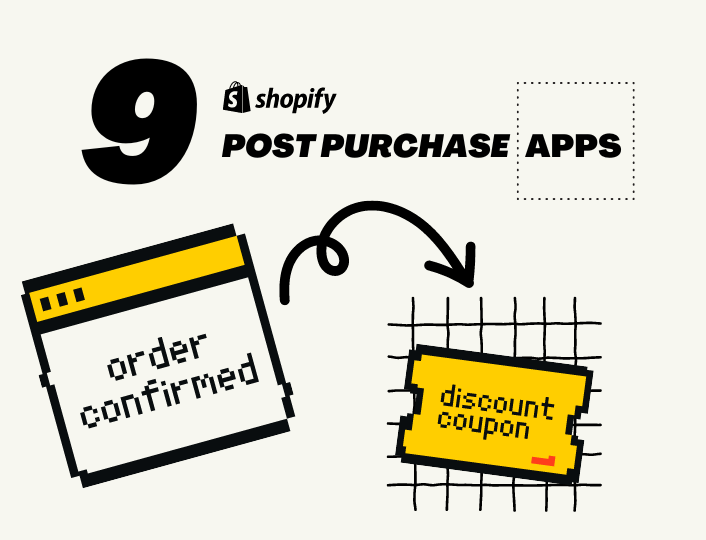Launching a new online store with Shopify is often an exciting journey. However, like any other venture, it comes with its own challenges. Achieving your end goal requires careful planning, strategy, and some result-driven Shopify tips.
Luckily, this guide offers eight invaluable tips for Shopify stores to help you not only launch your e-commerce store but also thrive in the competitive market.
So, whether you are a first-time Shopify store owner or seeking to boost your existing Shopify store, these tips will help set you on the right path to achieving your goals.
8 Shopify Tips for New Store Owners
1. Create a Brand identity
When starting a new Shopify store keep in mind that there are probably a thousand and one existing businesses offering similar products and services. An alluring brand identity helps you stand out.
Branding isn’t just about logos and colors. It is a subtle way to emotionally connect with your target audience. Develop a brand identity that resonates with them. Let them feel like they’re part of something extraordinary. Your branding should reflect your values, mission, and the essence of your products.
Crafting an impressive brand identity is an excellent way to appeal to your audience and get them to choose your brand over your competitors.
2. Use High-quality Visuals
In your toolbox of Shopify tips, high-quality visuals occupy a lofty spot. The quality of your product or video photos can make or mar your store’s performance. Here’s why.
Shopping online means customers don’t get to see whatever products they are buying in person. This makes it a little difficult to determine the quality regardless of the price. Not to mention that being expensive doesn’t necessarily make a product of better quality.
Using quality visuals can help your customers make a better buying decision with a certain level of confidence. Consider investing in Shopify product photography to learn the proper angles and lighting setup for capturing quality shots.
3. Use the Right Theme
One common mistake many Shopify newbies make is using random themes when creating their Shopify store. Yes, these themes may get the job done, but the big question is, does it align with your brand?
Using the right theme reduces the number of changes you may have to make in the future. It is also an essential part of branding. While there is no right or wrong theme, the right theme for your business should communicate your business offerings.
The Shopify theme store offers over 150 options made up of paid and free themes under multiple categories. Note that the paid themes are not necessarily better than the free options. So you don’t have to worry about the efficiency of free themes.
All you have to do is find one that resonates with your brand and offers the features you need, then customize it to your liking.
4. Use Whole Numbers in Pricing
A common pricing practice in the e-commerce industry is ending product prices with 99 cents. This is because many business owners believe it gives the illusion of affordability.
Counter-intuitive approach: use whole numbers. Some customers just want to buy quality items at a reasonable price. Adding 99 cents to your product prices can deter them. And as a newbie on Shopify, doing this can lower the authenticity of your business.
So, rather than trying to look cheap, price your products accordingly using whole numbers. For example, instead of $10.99, use $11.
5. Display Your Store Policy
When new customers visit your Shopify store, one of the things they look out for is your store policy. Most customers want to know these policies, especially for returns and exchanges, before deciding to patronize you.
Placing all your store policies in a visible position such as the website footer promotes trust and boosts sales. And the best part is that you don’t need to craft these policies all by yourself.
Shopify provides a policy template accessible through your admin dashboard. Simply tweak it where necessary and ensure you don’t omit vital details.
6. Gamify your website
With over 3.6 million websites on Shopify and about 12 to 24 million online retailers worldwide, you don’t need another basic website. Implement features that separate you from your crowd. And in a good way. What better way to make it happen than through website gamification?
Making your website fun and engaging has proven effective in terms of boosting your store’s performance and sales. For many successful Shopify store owners, it is their magic secret ingredient.
The spin-to-win and Falling Gift Game by Adoric elevates your website from being a regular online store to a fun place for your customers.
The trick behind this feature is to encourage customers to stay longer on your website, increasing the lead-conversion potential. It can also serve as a means to grow your email listing without doing too much.
7. Up Your Email Marketing Approach
Over the years, email marketing has become one of the most effective forms of marketing. According to Statista, e-mail marketing generated over 10 billion US dollars in revenue in 2023.
Additionally, the number of email users has recorded a continuous growth over the years, making it a gold mine of potential customers. But, to get the best result, you need to use the right approach.
When considering email marketing, be mindful of open rates for your industry. Hubspot provides an average email open rate for the most common B2B industries.
Source: Hubspot
Your email marketing shouldn’t just be about sales pitches. Craft attention-grabbing emails starting with the subject line. Share stories, insider tips, and exclusive offers. Personalize every letter sent to your customers.
Set up an email sequence that nurtures leads and turns them into loyal customers. Use welcome series, abandoned cart emails, exit-intent popups, and personalized recommendations to maintain a connection.
8. Promote Your Store on Social Media
As a beginner, you may be excited and eager to make sales from the jump, making running paid ads your first line of thought. But, in reality, paid ads are rarely effective for businesses at their early stages. This is because your brand is still unknown, so buyers have no reason to trust you.
To avoid wasting resources, the best option is to drive organic traffic to your website through social media marketing. You can leverage the power of social media to generate a buzz around your business and endear your brand to your potential customers.
Set up an account on multiple platforms such as Pinterest, Instagram, Facebook, TikTok, and their likes. Then post content including, pictures, stories, and videos, consistently on each platform with hashtags and trending sounds to garner attention.
Ensure the content you post is yours, or reference the source. Additionally, make sure you share content that interests your target audience. You can also repost content by influencers in your industry or leave comments under their comment section.
Doing this will help boost your visibility. Now, you can redirect the attention to your Shopify website. This is a good way to gain the trust of your potential customers before running paid ads.
Final Words
We hope these Shopify tips we have shared in this guide will help you excel in your Shopify business. By choosing the right theme, gamifying your website, crafting an alluring brand identity, and promoting your business on Social media, you can successfully carve a space for your business in the e-commerce world.
However, although these steps can help boost your website traffic, sales remains the ultimate goal. This is where Adoric helps Shopify sellers fast-track their sales trajectory.
Adoric specializes in helping Shopify stores raise their lead conversion rate by up to 20%.
Want to see how Adoric helps other store owners like you? Check out these stories and sign up for free today.




